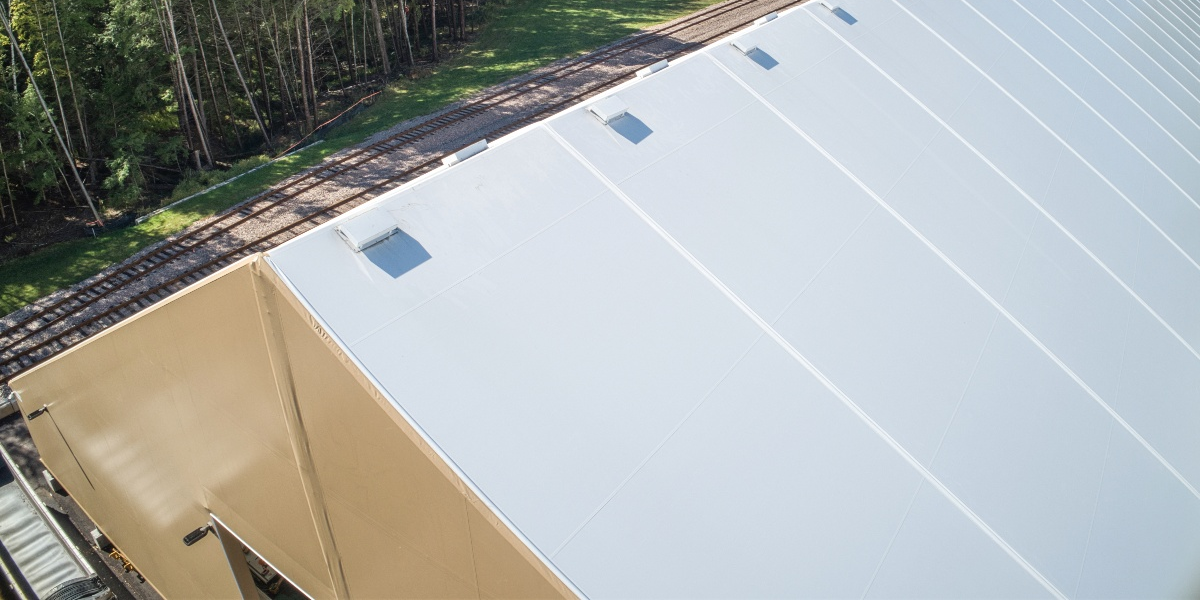Saving Money and Energy with Fabric Roofs

There's no question that the roof is an important part of any building. As such, it's important to consider the roof when making any building choices. The roof of a fabric building is no exception - and there are many reasons to choose fabric over other roofing materials.
Fabric cladding will never rust, no matter the environment. In wet climates, or when storing corrosives, there are not many building materials that can make that guarantee. In addition to being unsightly, a corroded roof is unsafe and expensive to repair. Even a small amount of corrosion in the roof is enough to let moisture drip into the building, causing more rust and possibly ruining the interior of the building.
Corrosion on top of the roof may happen slowly - and since you're probably not on top of your building on a regular basis, the rust will have plenty of time to start building. You may not even notice it until it eats through to the interior of the building - which is much too late! Any type of metal, even when treated with an anti-corrosion treatment, is susceptible to rust. No matter the exposure, a fabric roof will never rust. Adding a fabric liner to the inside of the roof will keep corrosive material completely out of contact with the steel, making it impossible for rust to start.
The high albedo of fabric roofs contributes to the energy efficiency of the building. Any type of architectural fabric has some level of translucency, and on a sunny day many fabric buildings require no artificial lighting. On days when lights are needed or for nighttime work, the bright fabric will reflect the lights, requiring less energy to create a bright, safe building. Because sunlight streams in through the walls and ceiling, there are no shadowy corners where the lights can't reach.
Adding a skylight to the roof of a fabric building increases the sunlight available inside the building, and because the skylight is still part of the fabric roof it will not leak. Fabric skylights are a great option for darker or insulated fabric buildings.
While fabric buildings are available in a variety of colors to enhance your brand or blend in with existing structures, a white fabric roof will have additional benefits. Dr. Steven Chu, United States Secretary of Energy, touts white roofs as a way to save up to $735 million in the U.S. alone. Just think of the potential savings to your organization! White roofs also mitigate "heat islands" caused when many buildings are clustered together, creating a more comfortable environment around the buildings.
Of course, insulated fabric buildings are also available. Adding insulation up to R-30 is available to keep your building protected from extreme temperatures and maintain a consistent indoor temperature. While an insulated building will not have the natural light benefits of an uninsulated fabric roof, in many applications it's the most practical choice.
Whatever the side wall and end wall configuration of your building, the roof is an additional asset with its own benefits. Adding a fabric roof to your building is likely to save money and energy in the future.
